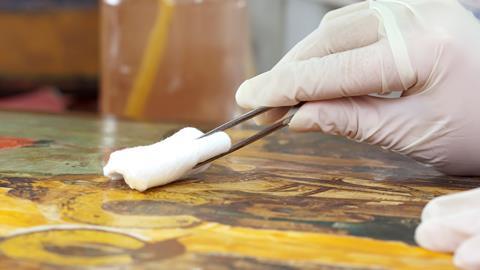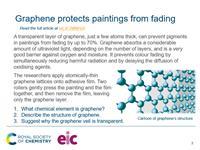Show students how graphene can reduce colour damage from radiation and oxidation
A one-slide summary of this article with questions to use with your 14–16 students: rsc.li/3lvOAWk
A transparent layer of graphene, just a few atoms thick, can prevent pigments in paintings from fading by protecting them from ultraviolet light, moisture and air pollutants.
Researchers suggest a graphene veil can prevent up to 70% of colour fading. While the exact amount of protection depends on the colours and the pigment substrate, ‘this corresponds approximately to 200 years of exposure under the conditions encountered in museums’, says study leader Costas Galiotis of the Foundation for Research and Technology Hellas in Greece.
‘Graphene absorbs a considerable amount of ultraviolet light, depending on the number of layers, and is a very good barrier against oxygen and moisture,’ Costas explains. ‘It prevents colour fading by simultaneously reducing the incident harmful radiation and by delaying the diffusion of oxidising agents.’
The researchers used a machine to apply the veil to a painting using atomically-thin graphene lattices grown by vapour deposition on a copper substrate that are transferred onto adhesive film. Two rollers gently press the painting and the film together, and then remove the film, leaving only the graphene layer.
To test the veil, the researchers created an artifical ageing process: exposing coloured disks protected by layers of graphene to high levels of light, warmth and humidity. They also examined the effects on a painting – Indian inks on glossy paper – covering one half with their graphene veil while leaving the other unprotected. After the painting had been left in the ageing chamber for more than 1000 hours, the colours on the unprotected half had noticeably faded but the colours protected by the graphene veil held fast.
Put this in context
Add context and highlight diverse careers with our short career videos showing how chemistry is making a difference and let your learners be inspired by chemists like Lucia, a museum scientist.
Read the full story in Chemistry World.
Downloads
EiC starter slide graphene veil protects paintings
Presentation | PDF, Size 0.19 mbEiC starter slide graphene veil protects paintings
Presentation | PowerPoint, Size 0.48 mb

















No comments yet